DLK-dependent axonal mitochondrial fission drives degeneration after axotomy
- PMID: 39737939
- PMCID: PMC11686342
- DOI: 10.1038/s41467-024-54982-9
DLK-dependent axonal mitochondrial fission drives degeneration after axotomy
Abstract
Currently there are no effective treatments for an array of neurodegenerative disorders to a large part because cell-based models fail to recapitulate disease. Here we develop a reproducible human iPSC-based model where laser axotomy causes retrograde axon degeneration leading to neuronal cell death. Time-lapse confocal imaging revealed that damage triggers an apoptotic wave of mitochondrial fission proceeding from the site of injury to the soma. We demonstrate that this apoptotic wave is locally initiated in the axon by dual leucine zipper kinase (DLK). We find that mitochondrial fission and resultant cell death are entirely dependent on phosphorylation of dynamin related protein 1 (DRP1) downstream of DLK, revealing a mechanism by which DLK can drive apoptosis. Importantly, we show that CRISPR mediated Drp1 depletion protects mouse retinal ganglion neurons from degeneration after optic nerve crush. Our results provide a platform for studying degeneration of human neurons, pinpoint key early events in damage related neural death and provide potential focus for therapeutic intervention.
© 2024. This is a U.S. Government work and not under copyright protection in the US; foreign copyright protection may apply.
Conflict of interest statement
Competing interests: The authors declare no competing interests.
Figures
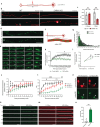
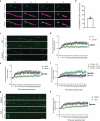
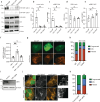
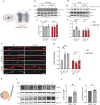
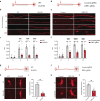


Update of
-
DLK-dependent axonal mitochondrial fission drives degeneration following axotomy.bioRxiv [Preprint]. 2024 Jun 4:2023.01.30.526132. doi: 10.1101/2023.01.30.526132. bioRxiv. 2024. Update in: Nat Commun. 2024 Dec 30;15(1):10806. doi: 10.1038/s41467-024-54982-9. PMID: 36778383 Free PMC article. Updated. Preprint.
References
-
- Whitmore, A. V., Lindsten, T., Raff, M. C. & Thompson, C. B. The proapoptotic proteins Bax and Bak are not involved in Wallerian degeneration. Cell Death Differ.10, 260–261 (2003). - PubMed
-
- Deckwerth, T. L. et al. BAX is required for neuronal death after trophic factor deprivation and during development. Neuron17, 401–411 (1996). - PubMed
Publication types
MeSH terms
Substances
Grants and funding
- R01 NS112691/NS/NINDS NIH HHS/United States
- ZIA HD008966/ImNIH/Intramural NIH HHS/United States
- ZIA-HD008966/U.S. Department of Health & Human Services | NIH | Eunice Kennedy Shriver National Institute of Child Health and Human Development (NICHD)
- 1ZIANS003155-03/U.S. Department of Health & Human Services | NIH | National Institute of Neurological Disorders and Stroke (NINDS)
- ZIAEY000488/U.S. Department of Health & Human Services | NIH | National Eye Institute (NEI)
LinkOut - more resources
Full Text Sources
Research Materials
Miscellaneous

